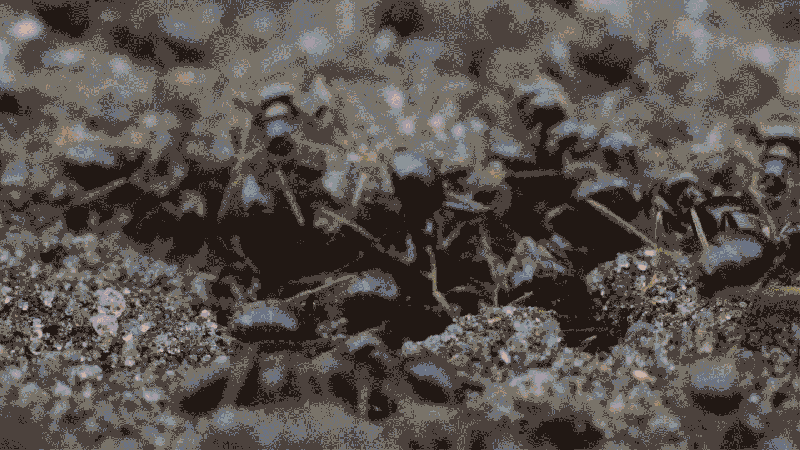If an infection takes hold in an ants’ nest, it could spell disaster for the whole colony. But some worker ants appear to have a workaround for that. When exposed to a pathogen, black garden ants (Lasius niger) tinkered with their nest layout in ways that could slow the spread of disease, a new study suggests.
Several animals are known to alter their behavior to avoid infections, including humans, guppies and mice. But these are the first nonhuman animals shown to actively alter their surroundings in response to infections, researchers report September 2 in a paper posted at bioRxiv.org. The preprint has yet to be peer-reviewed.
Limiting social contact — through social distancing, for example — is thought to be an effective barrier against the spread of disease (SN: 3/13/20). Humans also alter what the researchers call spatial networks by, for instance, using parts of a building or city as quarantine zones or expanding urban spaces.
To see whether ants act in a similar way, Nathalie Stroeymeyt and her team at the University of Bristol in England let 20 groups of 180 black garden ants excavate nests in soil-filled jars. The day after digging started, the researchers added 20 more worker ants to each jar, with half of the jars receiving groups infected with a fungal pathogen.
Over the next six days, the researchers used video to monitor the ants’ behavior and micro-CT scans to study the evolution of their nests.
Ant colonies exposed to the pathogen dug nests faster and initially made more tunnels than healthy colonies, and after six days, had made several structural modifications, including spacing entrances 0.62 centimeters farther apart on average. The exposed colonies also placed chambers — which house colony resources such as queens, their brood and food — in less central locations. And ants infected with the fungus spent more time at the surface than their coworkers, which the study suggests is probably a form of self-isolation.
The team then used spatial network analysis and disease transmission simulations to see if the changes would have any noticeable impact on the way disease would spread in the nests. Taking the designs crafted by the exposed and unexposed colonies, the team simulated what would happen if a pathogen was introduced. Ant colonies in the disease-resistant redesigns would have a significantly lower fungal load — and fewer lethal doses — than those in nests built without any previous exposure to disease, the team found.
The findings are fascinating, though not surprising, says Sebastian Stockmaier, a behavioral disease ecologist at the University of Tennessee, Knoxville. Social insects like ants, bees and termites have evolved a range of colony-level defenses to effectively manage diseases, he says, and large-scale outbreaks are rare.
Group living is generally thought to increase the risk of disease, and this threat is particularly pronounced in social insects because of their low genetic diversity and frequent social interactions, factors which help disease to spread. Because of this, when faced with disease, “their strategies are typically targeted at protecting the group as a whole, rather than focusing on the individual,” says Stockmaier.


